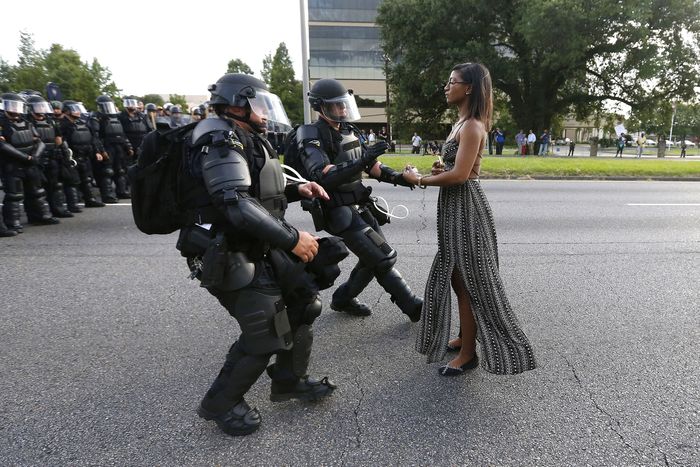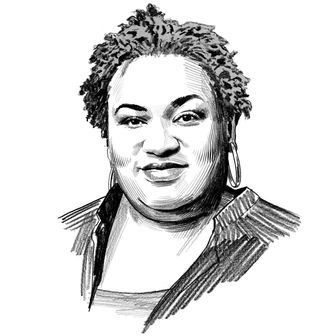
10 Years Since Trayvon: The story of the first decade of Black Lives Matter.
In 1892, at the height of the lynching crisis, Ida B. Wells proclaimed that “a Winchester rifle should have a place of honor in every black home, and it should be used for that protection which the law refuses to give. When the white man who is always the aggressor knows he runs as great a risk of biting the dust every time his Afro-American victim does, he will have greater respect for Afro-American life.”
The critical point for me in Wells’s manifesto for Black self-defense is not her overarching respect for the power of guns. It is her observation about where the aggression begins. Losing that thread of the argument, about who actually starts the fights, is the reason so much white aggression is seamlessly restyled as the right to “stand one’s ground,” to protect and defend one’s kith and kin. Conversely, Black self-defense is transposed into an act of unjustified aggression and met with fire and fury by both the state and self-deputized white citizens.
Do Black people have the right to defend themselves against acts of hostility and aggression, especially when the aggressors are white? When confronted with increasingly normalized acts of white aggression, do Black people have the right to stand our ground?
Philando Castile told the officer who pulled him over for a traffic stop that he had a firearm, which he had a permit for. The officer killed him anyway. In 2014, police killed John Crawford III inside an Ohio Walmart for aimlessly carrying an air rifle that was sold in the store, perhaps considering whether he wanted to buy it. And certainly, Tamir Rice is one of the youngest victims of our culture’s excessive fear of Black men and boys with guns, even though his was a toy and he was only 12.
The answer to white aggression cannot, under these circumstances, be more guns. But the decade since Trayvon Martin’s death has been marked by exactly this: more guns. Firearm sales broke records in the Obama era and exceeded that pre-pandemic record last year. While African American gun ownership has increased, the vast majority of folks hyperexercising their Second Amendment rights are white people who use the language of self-defense, safety, and protection as the excuse to stockpile guns.
One wonders if they are not readying themselves for a war. Dylann Roof told officers that he wanted to start a “race war” when he slaughtered nine worshipping souls in a South Carolina church. One wonders if his singular attack, together with the collective attempt at insurrection on January 6, 2021, is a dress rehearsal. It seems Black people are considered the enemy. Unrest and disease are in the air. And the aggressors, the neighborhood warmongers, have restyled themselves as the ones under attack, as the ones needing protection.
And so, as has happened after every major moment of racial upheaval, African Americans have forged a politics of Black self-defense. Although the country loves to tout the nonviolent direct action of the King years, the Deacons for Defense and Justice, founded in Jonesboro, Louisiana, a small town about 20 minutes from where I grew up, rejected nonviolence as praxis. These World War II veterans carried guns and defended their homes and communities. So too did the Black Power era’s most iconic group call itself the Black Panther Party for Self-Defense. In Shreveport, Louisiana, in 2020, when a group of activists gathered to peacefully protest a persisting Confederate monument in town, they were intimidated by an armed biker militia group; in response, members of an area Black gun club showed up to protect the peaceful demonstrators. These local skirmishes, often in places with long and storied Confederate histories, are becoming increasingly volatile theaters in an increasingly tactical era of the U.S. gun-culture wars.
In the broader movement, however, the language has shifted from self-defense to public safety and protection, perhaps because this language is, in a word, safer. When the Black Panther Party defended its right to armed self-defense, the U.S. government responded by characterizing the group as a threat to democracy; killing its leaders, such as Fred Hampton; and imprisoning many of its members under dubious pretenses. Committed to learning the lessons of the 1960s and ’70s, Black Lives Matter has chosen less muscular taglines.
But as that movement has matured, it has tried to learn the lessons of the Black Power era, pointing a watchful, anxious, dwindling white majority to the goals, rather than the tactics that have led to such fierce protests in the streets. The goal is safety; one tactic is self-defense. The goal is demonstrating that Black lives have value; the tactic is protest.
There is an earnestness to Black Lives Matter. A kind of barefaced removing of the gloves and the pugilism. Perhaps this is an homage to Trayvon Martin, who in his last moments was meandering through his father’s girlfriend’s neighborhood, chatting on the phone with his friend Rachel, unconcerned, as all young people should have the freedom to be, with the monster lurking in the bushes.
To this earnestness, the aggressors, who still are almost always white, have responded with cynicism, obfuscation, and gun sales. George Zimmerman added to the chorus by successfully auctioning for $250,000 the gun he had used to kill Martin.
What, then, does “public safety” actually look like if you’re Black? To have that conversation means we are ready to think about the inherent unsafety and aggression of whiteness, about how those who are invested in the worst iterations of white identity politics frequently create the social conditions against which Black life needs defending. It is Roof being received warmly in a Charleston church while murder plots and plans teemed in his heart. It is Kyle Rittenhouse auditioning for a gunfight and then crying when the world obliged him.
Wells understood that the law would not protect Black life. For her, guns in every Black home were the ticket to respect. I remain ambivalent, vacillating between following the legacy of my grandmother, who always kept both a rifle and a pistol at the ready, and leaning into my own intimate knowledge of the devastation guns bring, as the daughter of parents who were both victims of gun violence, my father fatally so. I don’t know that I believe guns are the guarantor of respect for Black life, given how much Black life they have taken. I’m fairly sure the only places more guns can lead us to are war, death, and destruction. At the same time, I’m a committed member of the “Don’t start none, won’t be none” and “Don’t pull the thang out unless you plan to bang” generation.
What continues to elude us, despite recent rejections of white vigilantism and excessive police force, is “respect for Afro-American life.” Over the past ten years, social-justice movements have used the streets, the courts, the voting booth, and the bully pulpit to mount a full-scale defense of Black life. But until we are able to tell the cold, hard truth about the existential threat of white racial aggression, not only to people of color but to the country as a whole, speaking of self-defense will be mere obfuscation. And the tools, the weapons, of self-defense will remain the province of those who picked the fights in the first place.





